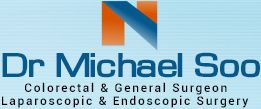Laparoscopy is a procedure that enables your surgeon to look inside the abdominal cavity to diagnose and treat a variety of abnormal conditions. A laparoscope is a long, narrow telescope with a light source and video camera at the end. The scope is passed through a tiny incision into the abdomen where images from the camera are projected onto a large monitor for the surgeon to view the abdominal cavity.
Laparoscopes have channels inside the scope enabling the surgeon to pass gas in and out to expand the viewing area or to insert tiny surgical instruments for treatment purposes. The surgical instruments used in operative laparoscopy are very small but appear much larger when viewed through a laparoscope.
Laparoscopy may be either diagnostic, operative, or both:
- Diagnostic Laparoscopy
A laparoscopy is diagnostic when the surgeon is viewing the abdominal cavity to make a diagnosis, without any treatment administered at that time. This is particularly useful when other tests such as x-rays, scans, or blood work are inconclusive. The laparoscope is usually smaller as no channel is needed for surgical instruments.
- Operative Laparoscopy (minimally invasive surgery)
A laparoscopy is considered operative when the surgeon is treating a problem that is found during diagnostic laparoscopy with surgical instruments through the laparoscope. If your surgeon sees an opportunity to repair a problem during a diagnostic Laparoscopy, an operative Laparoscopy will usually be performed at that time depending on the patient’s condition and the surgeon’s preference.
Types of Procedures
Types of operative procedures that can be performed with Laparoscopy include the following:
- Laparoscopic Cholecystectomy: Removal of the gallbladder
- Laparoscopic Appendectomy: Removal of the appendix
- Laparoscopic Hernia Repair: Repair of common hernia sites including inguinal (groin), femoral (below the groin), and some abdominal hernias.
- Laparoscopic Spleenectomy: Removal of the spleen
- Laparoscopic Bariatric Surgery: Certain weight loss surgeries can be performed laparoscopically including adjustable gastric banding and gastric bypass surgeries.
- Laparoscopic Colectomy:Surgical removal of part of the colon for treatment of a wide range of colorectal diseases such as colon cancer, diverticulitis, chronic ulcerative colitis, and Crohn’s disease.
- Laparoscopic GERD surgery: Treatment of gastroesophageal reflux disease (GERD) can be treated laparoscopically.
- Laparoscopic Adrenalectomy:Removal of the adrenal glands
Minimally invasive surgery (Laparoscopic surgery)
Laparoscopy is performed as day surgery either in the hospital or outpatient surgery centre under general, regional, or occasionally local anaesthesia depending on the type of procedure performed and the surgeon’s preference.
During laparoscopy, the patient is placed lying on their back with their body tilted so the feet are higher than the head. This position helps to move some of the abdominal organs toward the chest allowing the surgeon a clearer view.
The surgeon uses a needle to inject a harmless gas into the abdominal cavity near the belly button to expand the viewing area of the abdomen giving the surgeon a clear view and room to work.
The surgeon makes a small incision in the abdomen, usually at or below the belly button, and inserts a tube called a trocar through which the laparoscope is introduced into the abdomen.
Additional small incisions may be made for a variety of surgical instruments to be used during the procedure. The location of the incisions will depend upon the reason for the procedure.
With the images from the laparoscope as a guide, the surgeon can look for any pathology or anomaly.
The large image on the television screen allows the surgeon to see the abdominal contents directly and to determine the extent of the problem, and then perform the particular surgical procedure, if necessary.
If the surgeon sees an opportunity to treat a problem, a variety of surgical instruments can be inserted through the laparoscope or through other small incisions your surgeon may make.
After treating the problem, the laparoscope and other instruments are removed and the gas released.
The tiny incisions are closed and covered with small bandages.
Laparoscopy is much less traumatic to the muscles and soft tissues than the traditional method of surgically opening the abdomen with long incisions (open techniques).
Specific complications for Laparoscopy include:
- Post-operative fever and infection
- Surgical injury to blood vessels
- Surgical injury to bowel or bladder
- Gas Embolism
- Blood Clots
- Adhesions
- Conversion to Laparotomy: There are occasions when a laparoscopy cannot be completed successfully without converting to a traditional “open” surgery called a laparotomy. A laparotomy is similar but is done through a larger abdominal incision.






